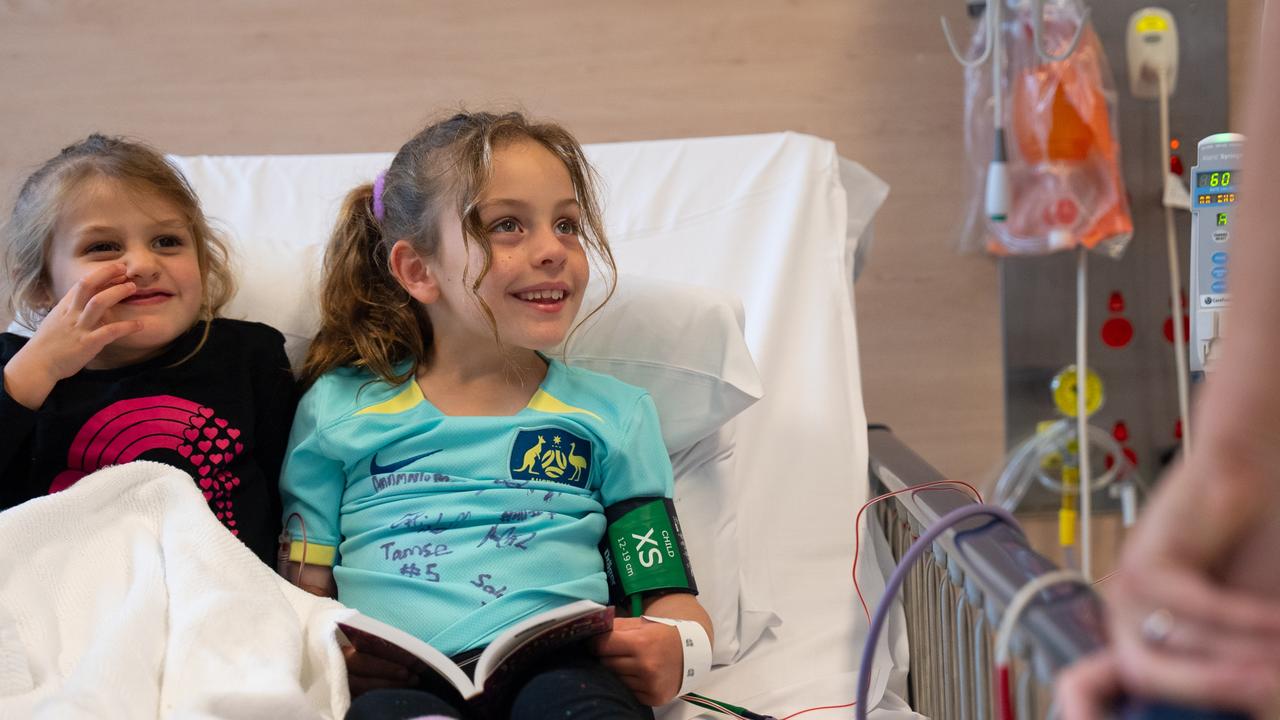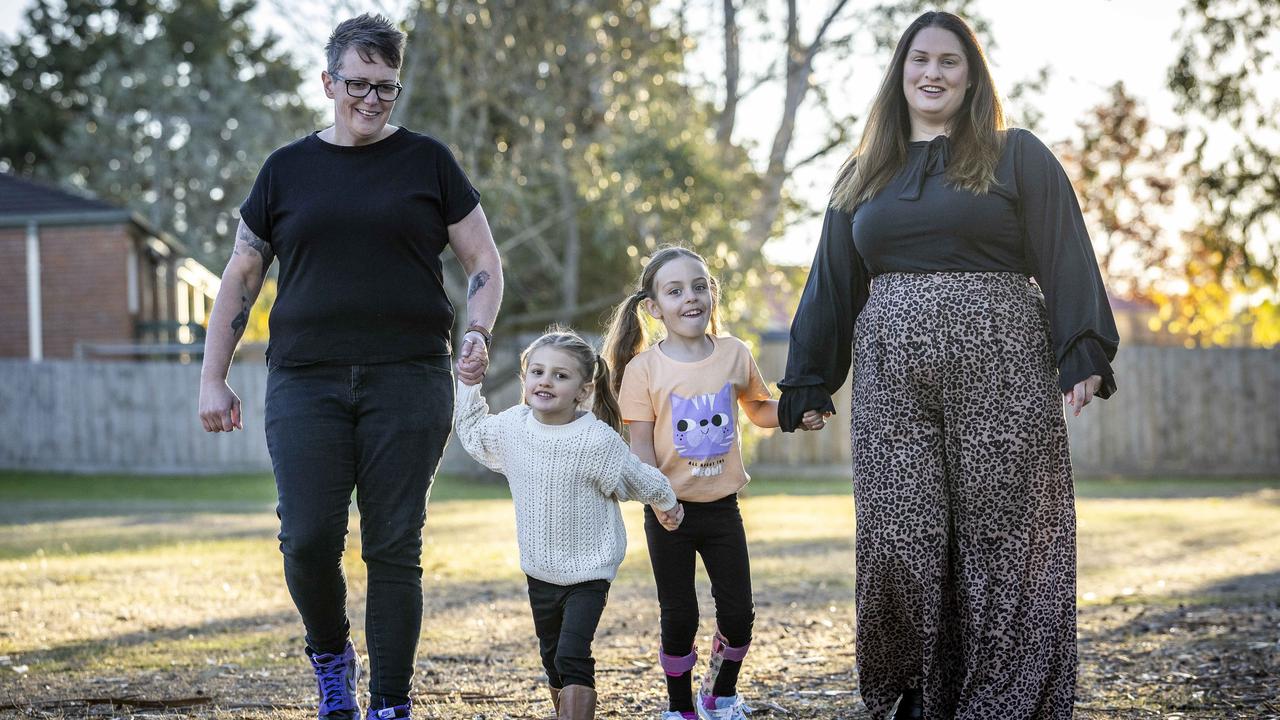First Aussie child gets top cerebral palsy treatment right here at home
Little Zara is the first Australian child to get this life-changing cerebral palsy treatment in her hometown – sick children and their families have previously spent thousands to access it overseas

READING LEVEL: ORANGE
A Melbourne girl has become the first child to receive a world-leading cerebral palsy* treatment at an Australian hospital.
Zara, six, had the procedure at the Monash Children’s Hospital.
She was the first child to get an infusion* in Australia to treat cerebral palsy using her own umbilical cord* blood, which was frozen at birth.
The success of Zara’s April procedure – which saw her team cancel a separate therapy because she didn’t need it – has renewed experts’ calls for the government to invest in more Australian trials.
Monash Children’s Hospital pediatric* neurology* head Professor Michael Fahey said they believed the cord blood’s anti-inflammatory* elements and stem cells* “allowed the brain to heal itself”.
“We are expecting that there will be a level of improvement in the way that Zara walks, the way that she communicates and the way she interacts with others," Professor Fahey said.
“People who have been to overseas centres tell us … their children aren’t as tired (after treatment), so they learn better. It’s great and really promising to be able to do this in Australia.”

He said that children with mild CP were the best candidates and the stem cells helped the brain heal – not regenerate*.
“They don’t become new nerve cells in place of what’s been damaged,” he said.
After waiting more than a year to access treatment, Zara underwent the 30-minute procedure – similar to a standard blood transfusion* – at the hospital after the regulator* gave approval.
Zara’s mother Michelle Forrest said her football-loving daughter would “give anything a go”.
“If other kids are doing it, she wants to do it too,” she said.
After the CP diagnosis, Zara’s mum wondered if the frozen cord blood could help her daughter.
They were considering the costly overseas option until they got approval here at home, and said they fought so hard in part to pave the way for other Australian kids and their families.
“The stars really aligned for us,” she said.

Zara’s biggest gains were expected after three to six months, but her mum said she was already improving, and had better balance, less muscle stiffness and easier movement.
“At soccer training, she can weave between the cones easier,” Ms Forrest said.
“At physio the other day, for the first time in her life, she walked up and down four steps without having to hold on to the rail.”
Cerebral Palsy Alliance senior research fellow Dr Megan Finch-Edmondson said a sibling or donor’s cord blood could also be used, and they would love to see a large-scale trial in Australia.
“(A national trial) may enable cord blood to become approved as a treatment for cerebral palsy in Australia,” she said.
Dr Finch-Edmondson said Zara’s path to treatment was “suitable” for some patients but the current process relied too much on individual doctors and hospitals advocating* for them.
“We want to see more children, like Zara, have the opportunity to be treated with cord blood in Australia and not need to rely on overseas treatment options,” she said.
POLL
GLOSSARY
- cerebral palsy: a brain disorder that appears in infancy or early childhood and permanently affects body movement and muscle co-ordination
- infusion: method of putting fluids into the bloodstream
- umbilical cord: the long, tube-like structure connecting an unborn baby to its mother
- pediatric: relating to medical care for children
- neurology: medical science of the brain and all the nerves in the body
- anti-inflammatory: reduces pain and swelling
- stem cells: special human cells that can develop into many different cell types, from muscle cells to brain cells
- regenerate: act of improving a place or system, especially by making it more active or successful
- transfusion: the process of adding an amount of blood to the body of a person or animal
- regulator: person or organisation whose job is to control an activity or process and make certain that it operates as it should and is legal and safe
- advocating: speaking and acting for others or for a cause you believe in
EXTRA READING
Sport win for nation’s diabetic kids
Is your suburb a health hotspot?
QUICK QUIZ
- What is the disease Zara is being treated for?
- The blood for Zara’s infusion came from which special cord?
- What was Zara able to do for the first time in her life after the treatment?
- What was she able to manage better at soccer training?
- How long did Zara have to wait to access this life-changing treatment?
LISTEN TO THIS STORY
CLASSROOM ACTIVITIES
1. Convince them
Design a poster or online advertisement. The purpose of your work is to convince new parents to save their babies’ umbilical cord blood.
Time: allow at least 30 minutes to complete this activity
Curriculum Links: English, Visual Communication Design, Science
2. Extension
Do you know what is so special about stem cells? Brainstorm what you know, what you have learned from the story and maybe use your research skills to find out more. Use the information to create a learning resource that will help all kids understand how and why stem cells are so important.
Time: allow at least 45 minutes to complete this activity
Curriculum Links: English, Science
VCOP ACTIVITY
To sum it up
After reading the article, use your comprehension skills to summarise in a maximum of three sentences what the article is about.
Think about:
What is the main topic or idea?
What is an important or interesting fact?
Who was involved (people or places)?
Use your VCOP skills to re-read your summary to make sure it is clear, specific and well punctuated.

